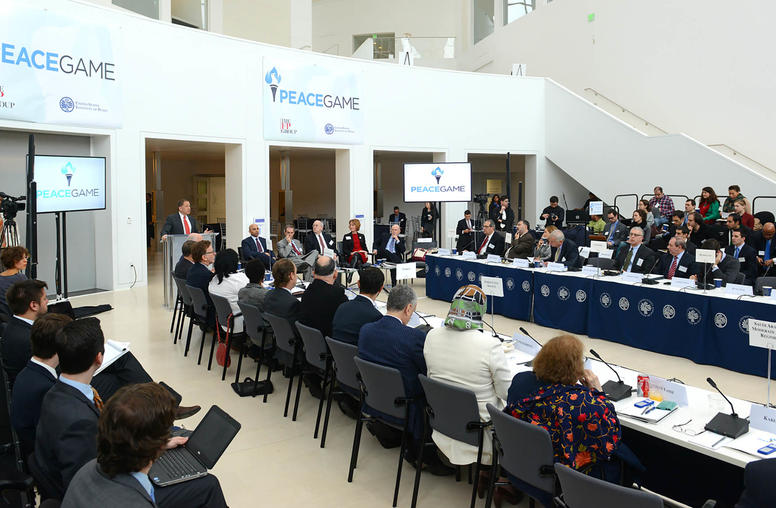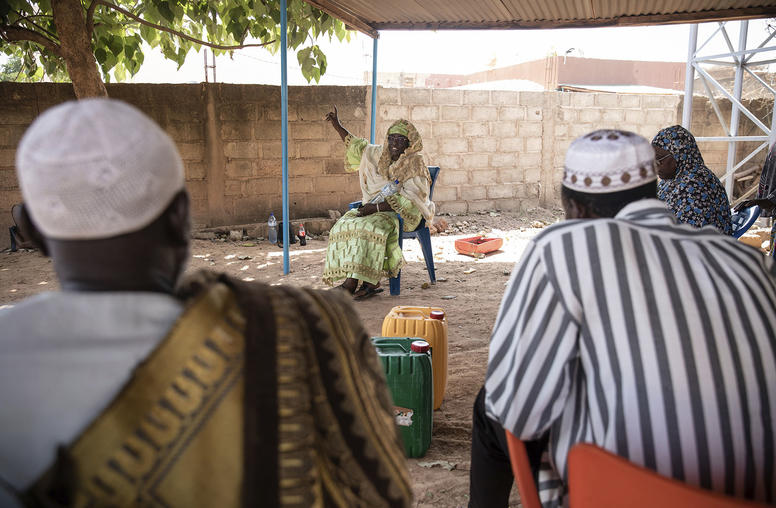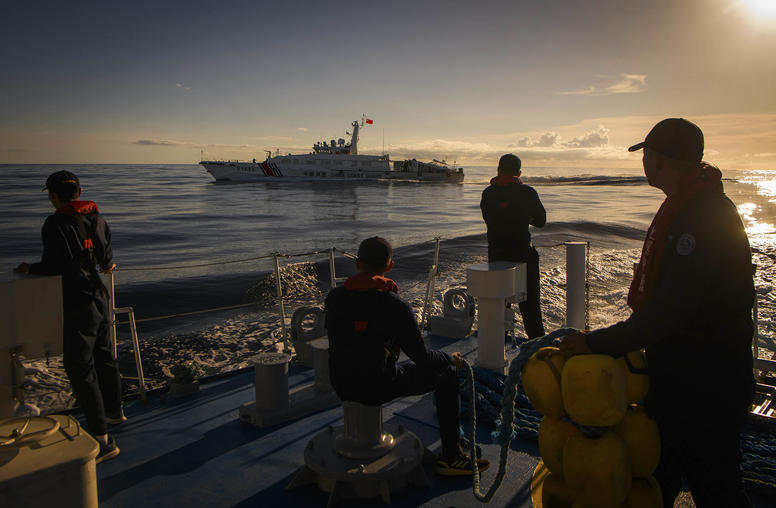America's Global Position
USIP leaders explain the effect that events around the world and here at home will have on the U.S., and the contributions the Institute can and does make during a time of tremendous challenge – and opportunity.
This past year offered fresh proof that the world we live in is ever dynamic. Fundamental change can come from something as extraordinary as a fruit vendor’s act of defiance in Tunisia to popular revolts by reform movements across the Middle East. At the same time, a decade of war and the weak U.S. economy dictates that there must be new ways to think about the role the U.S. will play in the world in the coming years.
We asked USIP leaders, from board members to senior staff and experts, to explain the effect that events around the world and here at home will have on the U.S., and the contributions the Institute can and does make during a time of tremendous challenge – and opportunity.
Abiodun Williams, acting senior vice president at USIP’s Center for Conflict Management, leads the Institute’s work in major conflict zones such as Afghanistan, Iraq, Pakistan, the Middle East and North Africa. He has served as associate dean of the Africa Center for Strategic Studies at the National Defense University, and prior to that, he was director of strategic planning in the Office of the United Nations Secretary-General, where he advised Secretaries-General Kofi Annan and Ban Ki-moon on issues such as U.N. reform, conflict prevention and international migration.
Drawing from your experience with the Institute, in international organizations, in government and in the private sector, when you look at recent history, how do you see America’s position in the world evolving? Is the U.S. losing power and status?
America still remains the most powerful country in the world, and its power and global leadership are critical for international security and prosperity. America’s image is more positive today and American ideals are widely admired. But a systemic change is the rise of emerging powers, in particular China, India, Brazil and South Africa, which are enhancing their role in world affairs.
The world today faces a far more complex array of challenges than arguably any other time in recent history. And these challenges are more than any one country can face alone. How and with whom the United States pursues its goals is relatively more important now than in the past. America would need to engage both with this powerful group of new players and traditional powers to tackle global threats including nuclear proliferation, climate change, terrorism, infectious disease, mass atrocities and poverty.
The United Nations is a unique instrument for international cooperation that can be used to address pressing global challenges. The U.S. can also use it to build coalitions and achieve its objectives in cooperation with allies and a wide range of other partners. Moreover, the world organization is an important vehicle for burden and cost sharing for the U.S., important considerations at a time of financial constraints.
How could potential cuts to the foreign affairs and defense budgets affect U.S. global leadership? How would such cuts affect the country in the short and long term? And what does that mean for most Americans?
A 2010 poll conducted by the Program on International Policy Attitudes finds that Americans estimate the U.S. government foreign aid expenditures at 25 percent of its budget. The American people would find a 10 percent allocation for foreign aid more appropriate, the poll finds. In reality, the United States spends only a little more than 1 percent on foreign assistance.
Cuts in the foreign affairs and defense budgets would undermine the ability of the American government to pursue its interests globally. It will weaken U.S. leadership, hamper the government’s ability to protect Americans, and weaken our diplomacy. The US has more interests to protect than any other nation, and Americans benefit from an international system that is strong, stable and secure. To protect its national interests, America cannot afford to retreat from the world in unsplendid isolation.
What are the unique things that the Institute brings to the field that others cannot do? How do you respond to the notion that USIP is duplicative or redundant of the State or Defense Department?
USIP is a unique national and international resource. It is on the ground in conflict zones around the world, and making effective contributions to the prevention, mitigation and resolution of violent conflict. USIP also conducts practical research on conflict areas and themes of direct importance to U.S. national security. This combination of analytical rigor and field presence allows the Institute to feed its know-how directly into its DC-based training programs and operations in countries at risk of conflict.
USIP also convenes recurring, prevention-focused “Track 1.5” dialogues which constitute an influential form of fieldwork and an increasingly important peacebuilding tool. The Institute engages current and former policy-makers and advisers to generate and develop policy proposals that are then fed into the formal Track 1 level where they are operationalized.
The Institute can take risks and build relationships with stakeholders in conflict zones that the State and Defense Departments cannot. USIP is flexible, agile and can work on issues that cannot be addressed in formal diplomatic channels. It is also nonpartisan and viewed as impartial by key players in our own government and in conflict situations.
After a decade of war and a weakening economy, the country has begun to look inward. Given all this, do you think the case for USIP is easier or harder to make?
As a Congressionally funded Institution working on peacebuilding, the Institute inevitably suffers from the reduced prioritization of foreign affairs expenditures by the U.S. government. But in times of budget austerity, that government is also searching for cost-effective ways to achieve its national interests. This works to USIP’s advantage because it is a low cost, high yield mechanism to manage international conflict.
In this regard, the Institute’s work on conflict prevention – a strategic priority – is critical. There is no more compelling issue than finding ways to prevent violent conflict, so we are not forced to respond after the bullets begin to fly. USIP does not only focus on the wars and conflicts that are already underway. Its over-the-horizon analysis improves our ability to anticipate major political changes like we have seen over recent months in the Middle East and North Africa so that democratic change can progress without violence.
Explore Further
- Global Change, Peacebuilding and USIP
USIP leaders explain the effect that events around the world and here at home will have on the U.S., and the contributions the Institute can and does make during a time of tremendous challenge – and opportunity.



